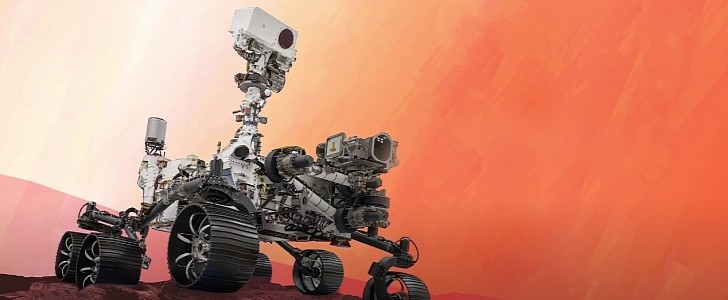Unlike Earth, our cold neighbor has an atmosphere that's roughly 100 times less dense. That's why the sounds captured by NASA's Perseverance are greatly muffled. Still, the rover continues to listen to sounds from Mars and occasionally hears the eerie chime of Martian wind, laser zaps, and even Ingenuity's blades spinning in the distance.
Perseverance uses its SuperCam microphone to pick up sounds from Mars. Mounted on its head, the instrument's main job is to determine the chemical composition of rocks. It can also fire a laser to investigate rocks that are smaller than a pencil point. The rover has another microphone mounted on its chassis that can also capture any sounds that travel in the thin atmosphere.
A new article published in the journal Nature reveals how fast sound travels through the thin atmosphere of Mars, how it might sound to us, and how that helps scientists determine if the robotic systems are functioning properly on the Red Planet. The study shows that low-pitched sounds on Mars travel at around 537 mph (240 meters per second), while here, on Earth, they travel at 767 mph (343 meters per second).
Recent records suggest that Mars is exceedingly quiet, which is also a result of its thin atmosphere. Nonetheless, the SuperCam microphone was still able to catch the muffled noises made by Perseverance's helicopter buddy while in flight. Ingenuity's rotors spin at 2,500 rpm and emit "a distinctive, low-pitched sound at 84 hertz."
NASA released a clip that also includes puffs and pings produced by one of Perseverance's tools that blows shavings off rocks for better inspection. The rover could also hear the laser zaps made by its SuperCam's laser, as well as the wind sweeping across Mars' surface.
Analyzing the sounds captured by the rover's microphones not only allows researchers to better understand the features of the Martian atmosphere but also helps them determine the condition of the rover – just like checking for any abnormal sounds that a car makes when driving. And what scientists have learned so far indicates a healthy robotic system that is ready to continue exploring this alien world mostly filled with carbon dioxide.
A new article published in the journal Nature reveals how fast sound travels through the thin atmosphere of Mars, how it might sound to us, and how that helps scientists determine if the robotic systems are functioning properly on the Red Planet. The study shows that low-pitched sounds on Mars travel at around 537 mph (240 meters per second), while here, on Earth, they travel at 767 mph (343 meters per second).
Recent records suggest that Mars is exceedingly quiet, which is also a result of its thin atmosphere. Nonetheless, the SuperCam microphone was still able to catch the muffled noises made by Perseverance's helicopter buddy while in flight. Ingenuity's rotors spin at 2,500 rpm and emit "a distinctive, low-pitched sound at 84 hertz."
NASA released a clip that also includes puffs and pings produced by one of Perseverance's tools that blows shavings off rocks for better inspection. The rover could also hear the laser zaps made by its SuperCam's laser, as well as the wind sweeping across Mars' surface.
Analyzing the sounds captured by the rover's microphones not only allows researchers to better understand the features of the Martian atmosphere but also helps them determine the condition of the rover – just like checking for any abnormal sounds that a car makes when driving. And what scientists have learned so far indicates a healthy robotic system that is ready to continue exploring this alien world mostly filled with carbon dioxide.








